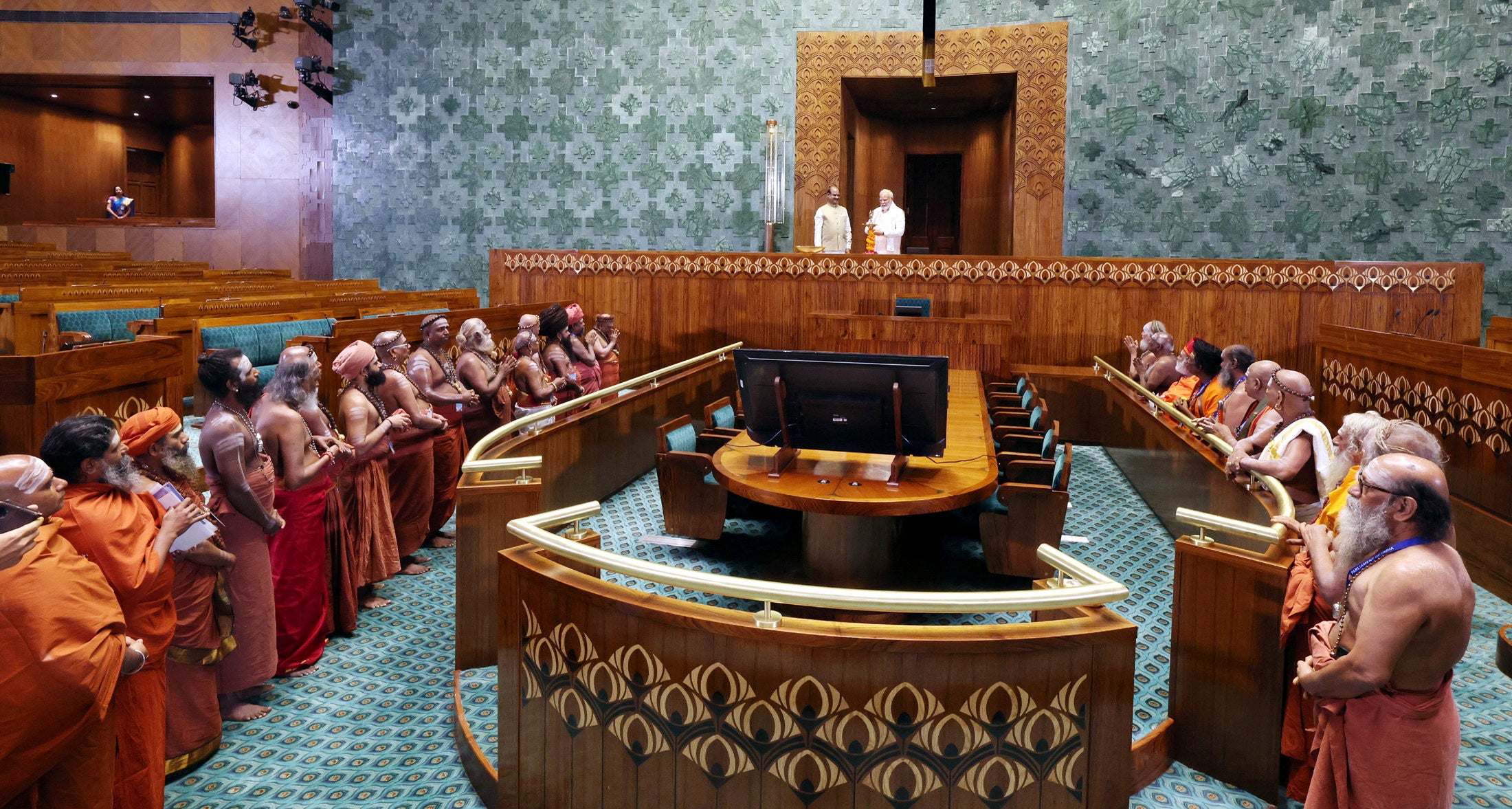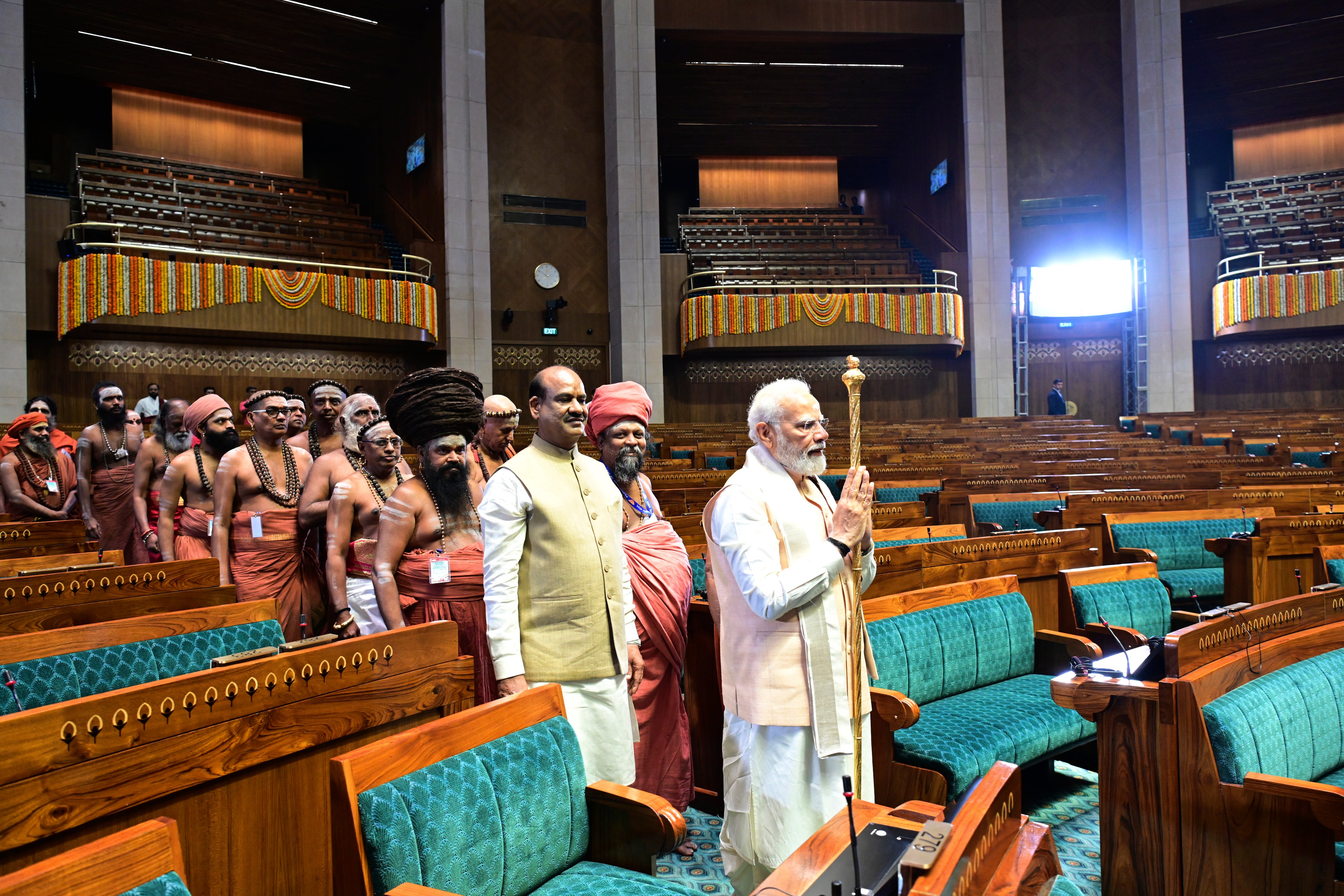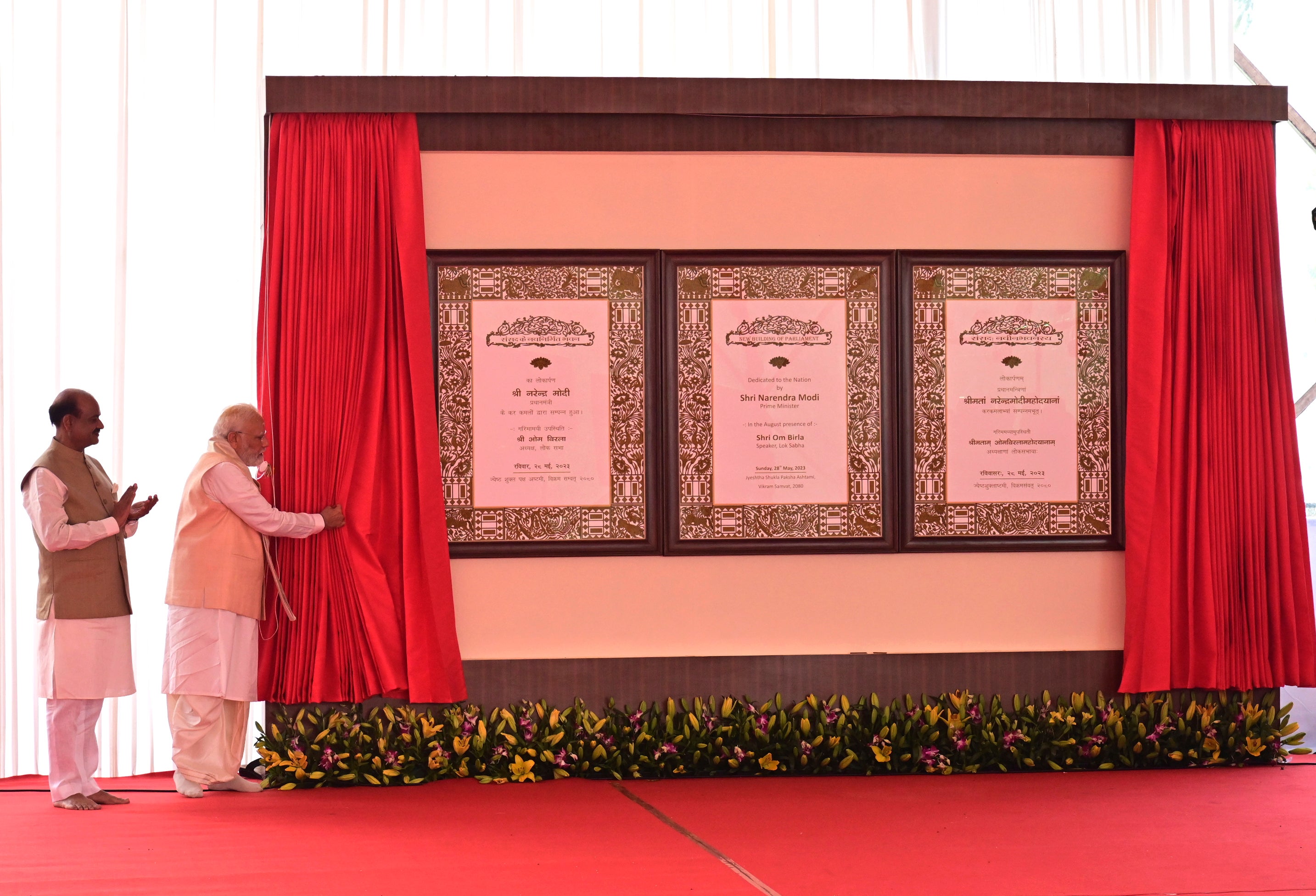Modi inaugurates new Indian parliament in break from colonial past amid opposition boycott
Opposition MPs stay away from event after calls for it to be overseen by India’s president were rejected
Your support helps us to tell the story
From reproductive rights to climate change to Big Tech, The Independent is on the ground when the story is developing. Whether it's investigating the financials of Elon Musk's pro-Trump PAC or producing our latest documentary, 'The A Word', which shines a light on the American women fighting for reproductive rights, we know how important it is to parse out the facts from the messaging.
At such a critical moment in US history, we need reporters on the ground. Your donation allows us to keep sending journalists to speak to both sides of the story.
The Independent is trusted by Americans across the entire political spectrum. And unlike many other quality news outlets, we choose not to lock Americans out of our reporting and analysis with paywalls. We believe quality journalism should be available to everyone, paid for by those who can afford it.
Your support makes all the difference.Narendra Modi inaugurated India’s new parliament building on Sunday, a modern complex that exemplifies his Hindu nationalist government’s grand plan to give a makeover to national capital Delhi’s architecture in a literal and symbolic shedding of the country’s British colonial era.
The inauguration, part of the ongoing revamp of the political heart of New Delhi, comes a year before parliamentary elections in which the prime minister’s Bharatiya Janata Party (BJP) will pitch its strong Hindu nationalist credentials, and its performance in office over the past decade, in an effort to win a third term in power.
But the grand ceremony, which included the performance of rituals significant to each of India’s major religions, was marred by a boycott by the country’s political opposition, which showed a rare unified front against Mr Modi and the BJP.
The ceremony was already taking place under a cloud because of continuing protests by India’s top wrestlers, including Olympians and gold medallists, surrounding allegations of sexual harassment committed by a leading politician at the head of India’s wrestling federation.
The wrestlers were unceremoniously shunted from their protest site, barely 2km away from the new parliament, and detained by Delhi police as they sought to peacefully march and protest at the site of the inauguration.
The inauguration has also been deemed controversial because it was held on the anniversary of the birth of Hindu ideologue Veer Savarkar, who is known for having asked the British government for clemency in the early years of the 20th century.
Following the inauguration, Mr Modi said the new edifice would fill the Indian people “with pride, hope and promise”.
“May this iconic building be a cradle of empowerment, igniting dreams and nurturing them into reality. May it propel our great nation to new heights of progress,” he tweeted.
Early in the morning, Mr Modi held traditional prayers outside the complex in a ceremony attended by his top cabinet ministers. He then lit a traditional lamp inside the parliament and congratulated some of the workers involved in its construction.
He proceeded to install the Sengol (a sacred sceptre) in the new lower house of the parliament – the history of which has itself become controversial. Mr Modi also released a Rs75 coin to mark 75 years of India’s independence from the British.
At least 20 opposition parties boycotted the event, saying Mr Modi had violated protocol in his decision to inaugurate the new complex and grab the spotlight for himself when it should have been done by the president, Draupadi Murmu – India’s highest executive.

“To open a new parliament building without the opposition, it does not mean there is a democracy in the country. It’s an incomplete event,” Supriya Sule, an opposition leader, told news agency ANI.
The Modi government has rejected the opposition’s argument, saying no protocol was violated and that the prime minister respects the constitutional head of the country. It also accused the opposition of trying to politicise the event.
The new parliament complex – built at a cost of £97m – is itself the centrepiece of a $2.4bn project aimed at eclipsing the significance of colonial-era buildings in the centre of the capital, paving the way for modern buildings with a distinctive Indian identity.

The new complex is designed to seat 888 members in the lower house and 384 in the upper house. The present building seats 543 and 250 members in the lower and upper houses respectively.
Besides modern technology, the new parliament has at least three times as much space to accommodate the lawmakers representing the world’s most populous nation.
The triangular-shaped parliament complex is just across from the old, circular heritage building built by British architects Edwin Lutyens and Herbert Baker in 1927, two decades before India gained independence. The old parliament building will be converted into a museum.
The project was announced in 2019, and Mr Modi laid the foundation stone a year later in December 2020. Already the plan had drawn intense criticism from opposition politicians, architects and heritage experts, many of whom called it environmentally irresponsible, a threat to cultural heritage and too expensive.
Outrage against the project grew in 2021, when at least 12 opposition parties questioned its timing at a moment when the country was experiencing a devastating surge in Covid cases and a high number of deaths.
They branded the revamp Mr Modi’s “vanity project” and said the construction of the new parliament was being prioritised while countless lives and livelihoods were being lost in the pandemic.

A year earlier, a group of 60 former civil servants wrote an open letter to the prime minister to highlight the architectural value of the old parliament building, saying the new plan would “irrevocably” destroy the area’s cultural heritage.
Mr Modi’s government, however, defended the revamp, saying it was necessary because the older building was “showing signs of distress and over-utilisation” and that the new design “combines the country’s heritage and traditions”.
Meanwhile, India’s opposition parties mocked the prime minister’s inauguration even as some Indian celebrities, including one whose own son was arrested by federal authorities last year, praised it.
One party, Rashtriya Janata Dal, controversially said that the new parliament’s triangular design looked like a coffin.
Congress party leader Rahul Gandhi, whose great-grandfather Jawaharlal Nehru was India’s first prime minister, mocked the ceremony, saying Mr Modi considered the inauguration to be a coronation.
Jairam Ramesh, a former federal minister and a senior Congress Party leader, also lashed out at Mr Modi. “A self-glorifying authoritarian Prime Minister with utter disdain for Parliamentary procedures, who rarely attends Parliament or engages in it, inaugurates the New Parliament building in 2023,” he tweeted.
“When the soul of democracy has been sucked out from the parliament, we find no value in a new building,” said an earlier combined statement by the opposition.






Join our commenting forum
Join thought-provoking conversations, follow other Independent readers and see their replies
Comments